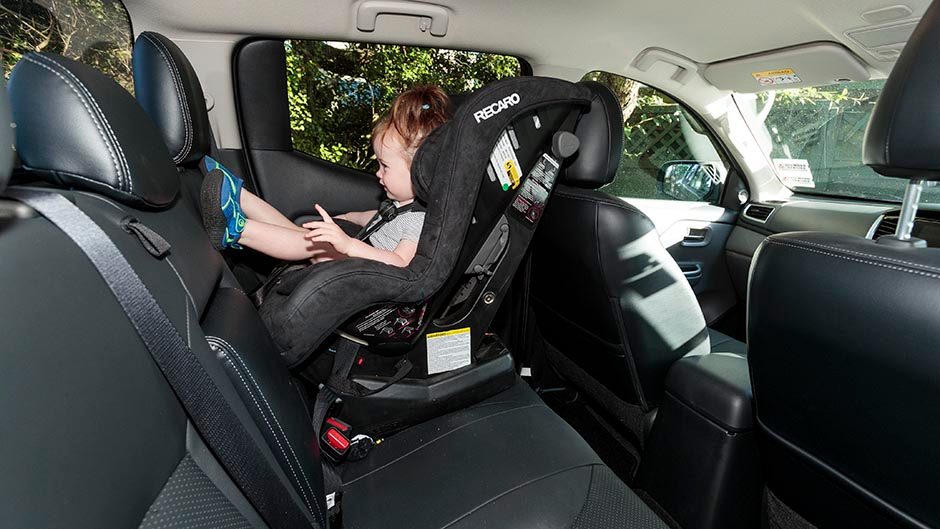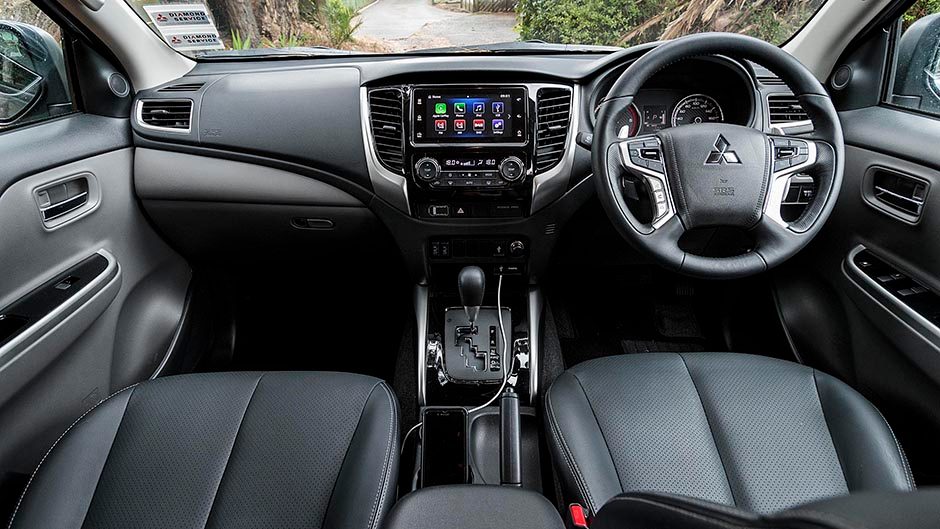The current crop of double cab utes strikes a great balance of family-up-front and business-out-back. It’s no wonder they now comprise one-fifth of the new vehicle market. Released in early 2015, Triton is now contending with much improved offerings from Hilux, Colorado and of course the country’s best seller, the Ford Ranger. We found some aspects of the Triton a little dated when we first drove it, and since then nothing much has changed. To add appeal Mitsubishi has done what it does best; slash the price. This VRX is top-dog of the 2WD range with an RRP of $51,990, but is currently on sale for $39,990, a saving of $12,000.
Available only as a five-speed auto (a cog less than most), the VRX gets all the good stuff; auto lights and wipers, dual zone air, keyless entry and start, cruise control, reversing camera and large touchscreen incorporating Android Auto and CarPlay. On the safety front there’s ABS, EBD, stability and traction control, but no active features.
While we didn’t mind the interior styling, the materials leave a lot to be desired. There’s an overwhelming amount of hard grey plastic and very few soft finishes. Hard wearing no doubt but a little basic. The leather seats are comfortable and supportive, the front two scoring heaters for the days the stubbies don’t quite cut it.

There’s plenty of room in the rear; we sat two adults and a mini-me in a car seat there in relative comfort. ISOFIX and tether points feature too. The rear seat lacks any trick split folding – the back folds down (not flat mind) in one piece rendering the whole seat unusable. Tool boxes and other bulky items that can be stored on the cab floor in the competition will have go on the seat.
All Tritons are fitted with the same 135kW/437Nm turbodiesel which puts it above Hilux in terms of power and torque, but a handful of units below Ranger, ’Rado and Navara. In terms of pace, it will lope to the limit in just over ten seconds which puts it mid-pack. The engine doesn’t feel quite as stroppy down low as the Colorado or Hilux and there’s some lag off the line, but there is a good dollop of midrange grunt which makes for easy overtakes. Fuel use ranged between high-sevens and mid-nines in our hands.
Ride quality isn’t Triton’s strong point. The rear end feels stiff and as a result there’s a lot of vibration – not of the good variety – making its way into the cabin. There’s less jiggle on the open road but around town the ride is best described as busy. Bottom of the class then, save for Hilux.

On road it’s not quite as wieldy as its competitors – the steering is weighty but lacks in feel and the rear end gets bounced around a bit on the bumps. If good handling is high on the priority list stump up the extra for a Ranger, Colorado or Navara.
Triton isn’t the most refined or up-to-date ute on the market, but it’s a solid buy at this price, especially given that the main competitors will struggle to sell you a poverty-pack model for this sort of money. Mitsubishi’s class-leading ten-year powertrain and five-year new vehicle warranty should help sweeten the deal.
| Model | Mitsubishi Triton VRX 2WD | Price | $39,990 |
| Engine | 2442cc, IL4, TDI, 135kW/437Nm | Drivetrain | 5-speed auto, rear-wheel drive |
| Fuel Use | 7.5L/100km | C02 Output | 195g/km |
| 0-100km/h | 10.21sec | Weight | 1825kg |


